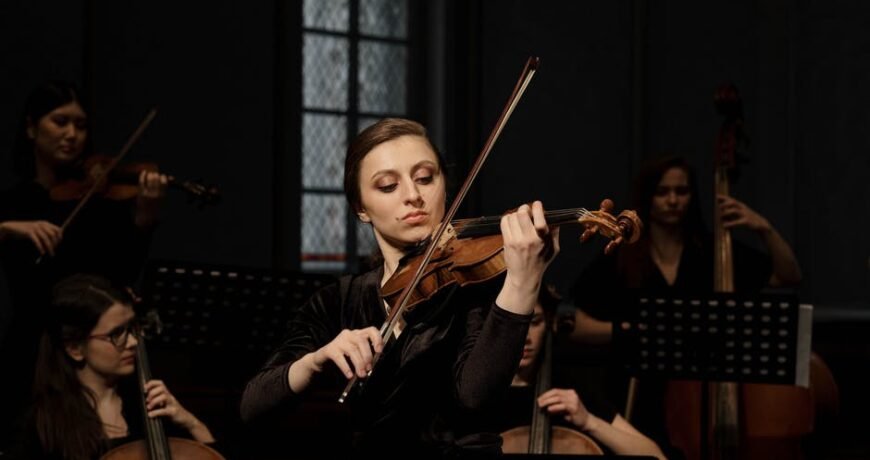[ad_1]

Are you thinking about investing in a violin? Have you been practicing and playing for some time but feel that you’re not getting very far?
Well, there might be a problem with your instrument or with how you’re playing it. We’re here to help.
In this article, we’ll be going over six of the most common beginner violin mistakes. That way, you’ll know how to avoid them and improve your playing experience with the instrument. Let’s get into it!
1. Choosing a Bad Instrument
Choosing a bad instrument is a common mistake for beginners. When searching for a violin, it is important to find one that fits, offers a good tone, and is well-made.
A student-level violin might be affordable, but if it is poorly made, it will not produce a good tone. Size is another important factor when selecting a violin.
A newborn student should not use an adult-sized instrument, as it will be too large. It is vital for all beginning violinists to understand the different violin sizes available.
2. Poor Posture and Technique
One of the most common beginner violin mistakes is utilizing poor posture and technique. To avoid poor posture, make sure your feet are grounded, your shoulders are relaxed, and your neck and back are properly aligned.
Use proper techniques such as stretching out and warming up, practicing fingering and a violin bowing technique, and taking breaks to avoid injury. Take private violin lessons with an experienced teacher or join a local orchestra to ensure your growth.
3. Sacrificing Tone for Speed
One common beginner mistake when playing the violin is sacrificing tone for speed. This occurs when something is played too quickly with either inaccurate bowing or intonation.
This can lead to poor-sounding passages. The violinist should focus on the quality of tone when trying to play something faster. It is vital to take the time to relax, focus, and work on the details to ensure each note is in tune and smooth.
4. Failing to Read Notation Properly
Beginners often make the mistake of not being able to distinguish between two different sounds when reading notation. To avoid this mistake, it is vital to review the position of the notes and the intervals between them. The clef (treble, bass, alto, tenor, etc.) must also be considered when reading notation.
5. Neglecting Arm Position and Hand Strength
One common and important beginner mistake with the violin is neglecting proper arm and hand position. Loosely holding the violin can cause tension, making complex movements difficult.
To avoid these issues, both arm position and hand strength need to be actively addressed. To maintain arm position, the chin rest and shoulder rest should be positioned to keep the instrument in place.
6. Neglecting Proper Finger Placement and String Crossing
Neglecting finger placement and string crossing is a common mistake for beginners. To avoid making this mistake, practice holding your fingers in the correct positions and string crossing to ensure smooth and accurate playing. Focus on placing the finger on the higher string close to the junction of the two strings and reaching as far back on the lower string as possible.
Learn How to Avoid Common Beginner Violin Mistakes
Playing the violin is a wonderful experience that is ever-evolving. With patience, practice, and an honest evaluation of your playing, you’ll be able to identify and correct any mistakes you make. Don’t let beginner violin mistakes discourage you; rather, use them as an opportunity to improve your skills and become the musician you know you can be!
Did you find this article helpful? Check out the rest of our blogs!
![]()
![]()
![]()
![]()
[ad_2]
Source link
